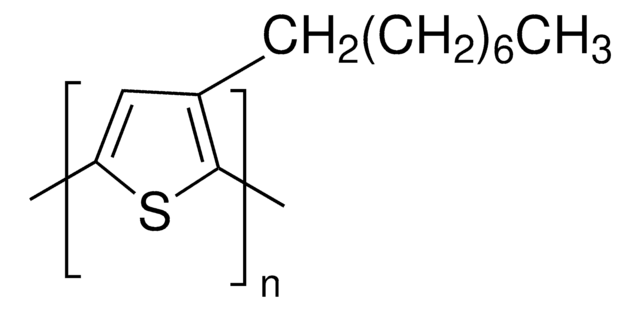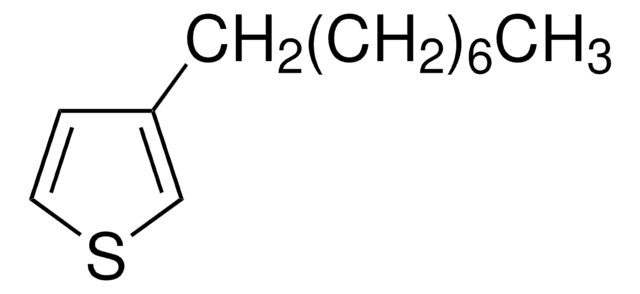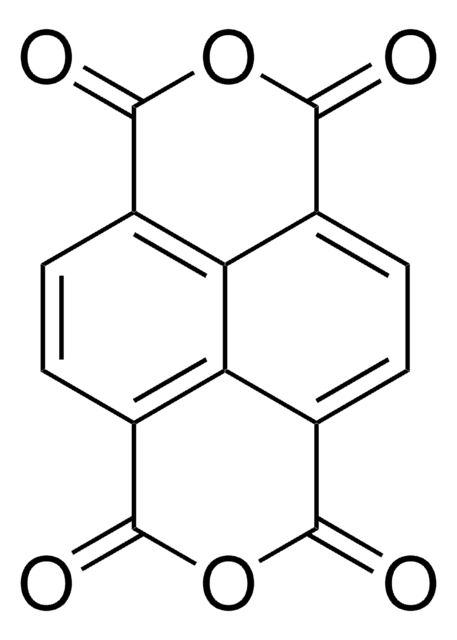445711
Poly(3-octylthiophene-2,5-diyl)
regioregular
Synonym(s):
P3OT
About This Item
Recommended Products
mol wt
average Mn ~34,000
color
black
conductivity
1 × 10-6 S/cm
~1 × 103 S/cm (when doped with iodine)
mp
190 °C
198-211 °C
fluorescence
λex 442 nm; λem 562 nm in chloroform
OPV Device Performance
ITO/PEDOT:PSS/P3OT:PC61BM (1:2)/LiF/Al
semiconductor properties
P-type (mobility=1E-4-1E-1)
Looking for similar products? Visit Product Comparison Guide
General description
Application
Rechargeable battery electrodes, electrochromic devices, chemical and optical sensors, light-emitting diodes, microelectrical amplifiers, field-effect transistors and non-linear optical materials.
Features and Benefits
Packaging
Legal Information
Rieke is a registered trademark of Rieke Metals, Inc.
Storage Class Code
11 - Combustible Solids
WGK
WGK 3
Flash Point(F)
Not applicable
Flash Point(C)
Not applicable
Personal Protective Equipment
Certificates of Analysis (COA)
Search for Certificates of Analysis (COA) by entering the products Lot/Batch Number. Lot and Batch Numbers can be found on a product’s label following the words ‘Lot’ or ‘Batch’.
Already Own This Product?
Find documentation for the products that you have recently purchased in the Document Library.
Customers Also Viewed
Articles
The application of conducting polymers at the interface with biology is an exciting new trend in organic electronics research.
Novel Graphene‑Based Nanostructures Production, Functionalization, and Engineering
Intrinsically stretchable active layers for organic field-effect transistors (OFET) are discussed. Polymer structural modification & post-polymerization modifications are 2 methods to achieve this.
Our team of scientists has experience in all areas of research including Life Science, Material Science, Chemical Synthesis, Chromatography, Analytical and many others.
Contact Technical Service




![Poly[2-methoxy-5-(2-ethylhexyloxy)-1,4-phenylenevinylene] average Mn 40,000-70,000](/deepweb/assets/sigmaaldrich/product/structures/344/488/b8f8179d-3970-4deb-a754-adda88cdb36f/640/b8f8179d-3970-4deb-a754-adda88cdb36f.png)






